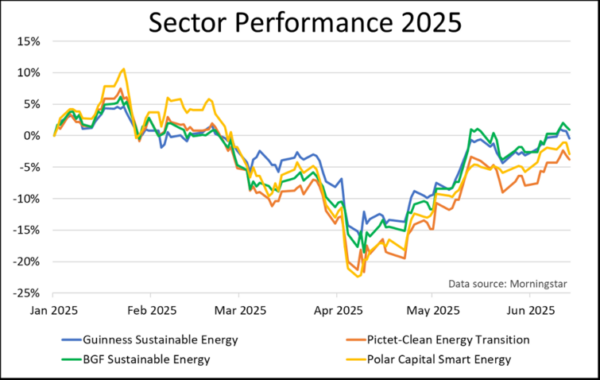Jun
2025
Nuclear energy funds to power portfolios
DIY Investor
18 June 2025
Governments are supporting nuclear again and investors should pay attention, argues Saltydog Investor.
For some time, we have argued that nuclear power should play a key role in the UK’s green energy strategy. Successive governments have agreed in principle but have been slow to act. However, that may be about to change.
This month, energy secretary Ed Miliband has committed £14.2 billion to the construction of Sizewell C, a new nuclear power station in Suffolk. Once operational, it is expected to deliver 3.2GW of clean, baseload electricity, enough to meet 7% of UK demand and power six million homes.
Alongside that, an additional £2.5 billion has been allocated to launch the UK’s first Small Modular Reactor (SMR) programme over the next four years. Rolls-Royce Holdings RR. 0.61% has been chosen to build the first three units in partnership with Great British Energy. Factory-based modular construction should cut costs and speed up delivery compared to traditional nuclear builds.
It’s not just the UK pressing ahead. China has approved 10 new reactors this year, with targets of 200GW by 2030 and 500GW by 2050. Europe is also ramping up. The EU wants to increase capacity to 109GW by 2050, supported by €241 billion (£205 billion) of investment. France already generates 65% of its electricity from nuclear and plans to grow that further.
Elsewhere, India, Japan and South Korea are reactivating or expanding their reactor fleets. Turkey expects its first unit at the Akkuyu Nuclear Power Plant to enter trial operations in 2025. Its goal is 20GW of nuclear capacity by 2050. Emerging markets including Indonesia, Malaysia, Kazakhstan, Ghana and Yemen are also progressing their own nuclear programmes.
At the end of May, President Donald Trump signed a series of executive orders aimed at quadrupling US nuclear capacity from 100GW to 400GW by 2050. The measures include making federal land available for new plants, prioritising funding, accelerating the disposal and recycling of nuclear waste, fast-tracking SMR development and reactor upgrades, and expanding the nuclear workforce through new apprenticeships.
According to the International Energy Agency (IEA), more than 40 countries have plans to expand their nuclear energy capacity.
The shift towards nuclear power aligns with the world’s growing energy demands. Industries of the future, such as data centres, chip manufacturing, desalination, hydrogen production, and next-generation farming systems, require huge amounts of energy. Nuclear power could help meet these needs in a sustainable way.
There must be an investment opportunity here, but it’s not particularly well covered in the fund universe. However, after a disappointing start to the year, some of the more general “green energy” funds such as Pictet-Clean Energy Transition, Guinness Sustainable Energy, BGF Sustainable Energy, and Polar Capital Smart Energy have started to recover. If they jump aboard, they could be well placed to benefit from this latest development.

There is also Geiger Counter Ord GCL 0.78%, an investment trust that focuses on uranium exploration and production stocks. It targets companies critical to the nuclear fuel supply chain.
Additionally, there are several exchange-traded funds (ETFs) targeting uranium and nuclear technologies. These include HANetf Sprott Uranium Miners ETF Acc GBP URNP 2.06%; HANetf Sprott Junior Uranium Miners ETF USD Acc GBP URJP 2.60%; Global X Uranium ETF USD Acc GBP URNG 1.06%; VanEck Uranium and Nclr Tchs ETF A $ Acc GBP NUCG 0.32%, and WisdomTree Uranium & Nucler Ey ETF $ Acc GBP NCLP 1.52%.
We will be keeping a close eye on developments and watching to see if more funds emerge to capture this growing global trend.
For more information about Saltydog, or to take the two-month free trial, go to www.saltydoginvestor.com
Alternative investments Latest » Exchange traded products Latest » Investment trusts Commentary » Latest » Mutual funds Commentary
Leave a Reply
You must be logged in to post a comment.